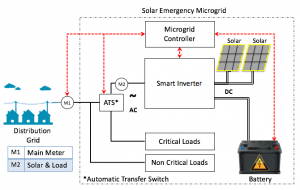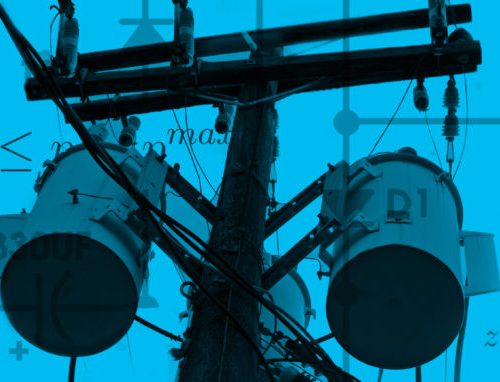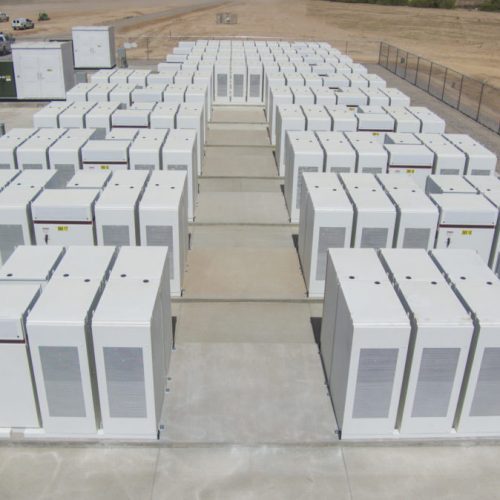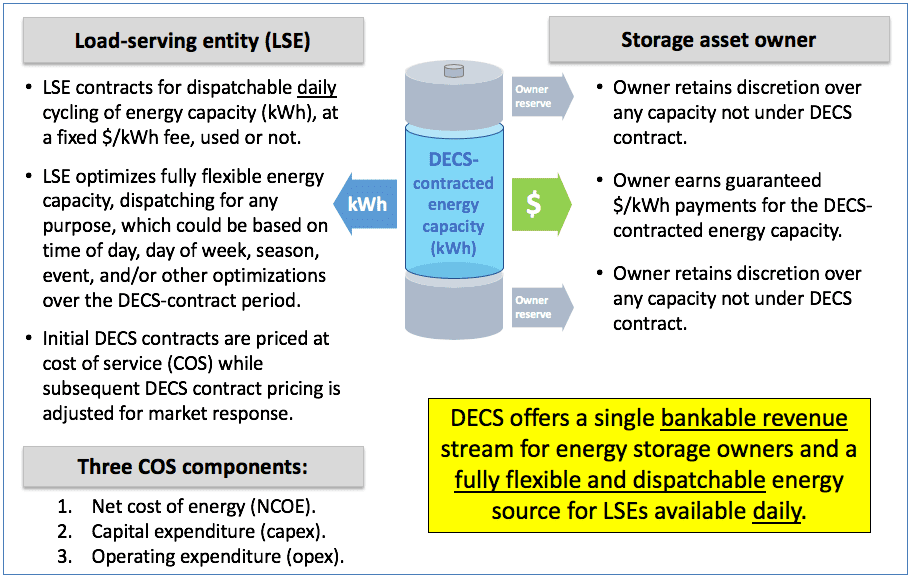Why Fire-Prone Communities Need Community Microgrids Now
This blog post explains the crucial need for Community Microgrids in fire-prone regions.
Read More
Paving the way for more clean local energy
Community Microgrid deployments currently face a number of policy and market barriers. The Clean Coalition is developing policies and market mechanisms that will optimize the significant economic, environmental, and resilience benefits of Community Microgrids, to truly unleash these important clean energy delpoyments.
The Clean Coalition is reviewing a number Community Microgrid configurations that incorporate combinations of these factors:
 The basic configurations:
The basic configurations:

To optimize economics for Community Microgrid sites, the Clean Coalition will investigate configurations for optimizing solar and/or storage for technical capabilities and economic benefits, including under existing rate and interconnection constraints. This investigation will design new and improved market mechanisms that truly optimize technical functionality and economic benefits for the grid, site owners, and communities.

By identifying the interconnection issues associated with Community Microgrid deployments in California, we can define proposals that yield technical and economic enhancements for Community Microgrids in the future.
For each of the Community Microgrid configurations, the Clean Coalition will evaluate economic impacts of interconnection rules associated with Community Microgrid configurations from technical, cost, and scheduling perspectives, from the start of Community Microgrid projects through their commercial online dates. The economic impacts will consider available value streams.

For most of the Community Microgrid configurations, the Clean Coalition will design a DECS market mechanism, or Dispatchability Adder, that will unleash the untapped value that Community Microgrids can provide in the form of fully dispatchable renewable energy. (The eighth configuration is solar-only and incapable of provisioning DECS.) The value of DECS to the Community Microgrid owner depends on the configuration of a Community Microgrid and the underlying rate and interconnection tariffs that govern those configurations.


The Clean Coalition seeks to optimize interoperability between Community Microgrid facilities and the systems operated by load-serving entities, the distribution grid operator, and the transmission grid operator. Interoperability between systems allows functional and economic relationships to be established. Interoperability possibilities and barriers will be identified, and interoperability recommendations will be defined.

It’s clear that there’s significant value from the indefinite renewables-driven backup power provided by Community Microgrids. However, a standard for valuing this resilience does not yet exist, which is hampering the market for Community Microgrids. The Clean Coalition is paving the way to unleash this important market by quantifying the value-of-resilience (VOR) in the form of a simple and standardized value, VOR123 — with resilience defined as the ability to keep critical loads online indefinitely during grid outages.
The latest in clean local energy
Learn about our innovative projects and initiatives on our blog, and see what others are reporting about our important work.
This blog post explains the crucial need for Community Microgrids in fire-prone regions.
Read MoreRedwood Energy reports on Clean Coalition’s expert commentary, warning that AB 942 threatens rooftop solar affordability and undermines the clean‑energy transition
Read articleThis Clean Coalition hosted webinar took place on 27 June 2025 at 10:00 AM PST.
Read More